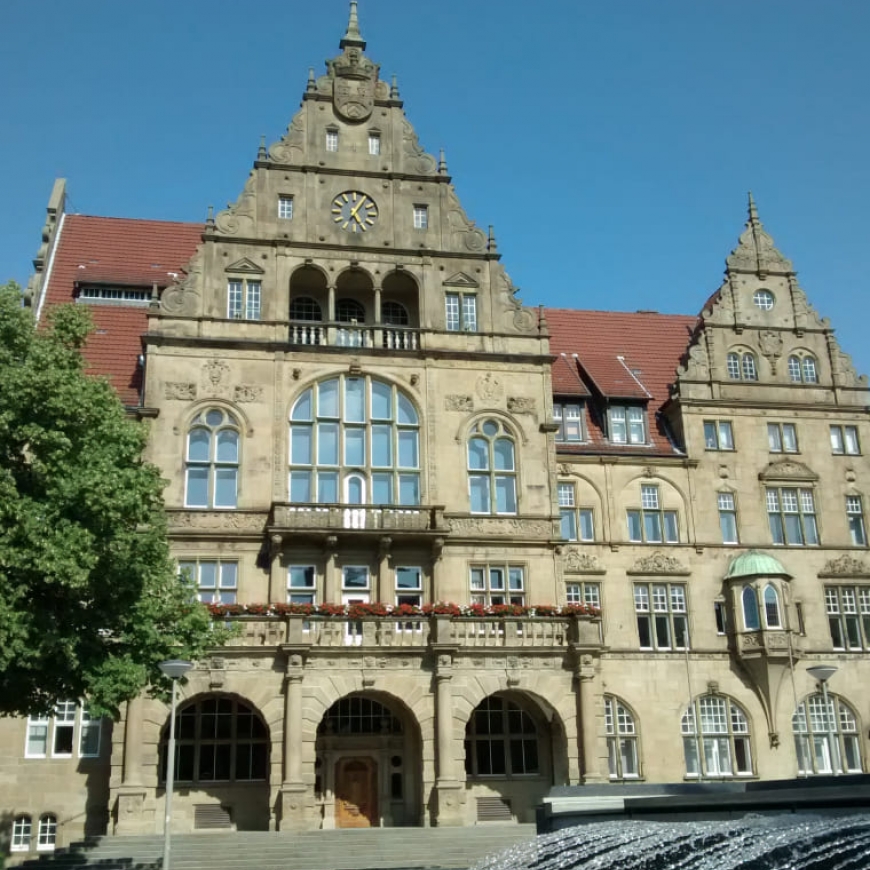Bielefeld

Bielefeld is a city in Germany, located in the Ostwestfalen-Lippe region in the northeast of North Rhine-Westphalia.
The historic city center lies north of the forested hills of the Teutoburg Forest, but modern Bielefeld also includes areas on the opposite side of the hills. The city is located on Hermannsweg, a 156 km long hiking trail that spans the entire length of the Teutoburg Forest.
Bielefeld was founded in 1214 by Herman IV, Count of Ravensberg, to protect the pass through the Teutoburg Forest. Known as a "linen town" until the 19th century, it was a minor member of the Hanseatic League, famous for its bleaching fields. The opening of the Cologne-Minden railway in 1849 spurred industrial growth, leading to the establishment of the first large-scale mechanized spinning mill and metallurgical plants in the 1860s. From 1904 to 1930, Bielefeld expanded significantly, with the completion of a reconstructed railway station, a municipal theater, and the Rudolf Oetker Halle concert hall, renowned for its excellent acoustics.
Bielefeld is known for its unique collectible banknotes made of silk, linen, and velvet, issued by the Bielefeld Savings Bank in the early 1920s. These "Stoffgeld," or cloth money, were sent around the world.
The city's industries include the production of food, leather and plastic products, clothing, textiles, household appliances, and various branches of heavy industry.
Bielefeld is home to several cultural attractions, such as the Kunsthalle Museum, the Rudolf Oetker-Halle Concert Hall, and the city's Botanical Garden (Botanischer Garten Bielefeld). Sparrenburg Castle is a prominent landmark of Bielefeld, built between 1240 and 1250 by Count Ludwig von Ravensberg. The castle's 37-meter tower and catacombs are open to the public.
The oldest church in the city is the Altstädter Nicolaikirche, a Gothic church standing 81.5 meters (267 ft) tall. A small museum inside the church details its history up to World War II. Founded in 1236 by the Bishop of Paderborn and expanded in the early 14th century, the church was damaged during World War II and later rebuilt. Its carillon can be heard three times a day. The church's most valuable treasure is an Antwerp carved altar adorned with 250 figures.
In the southeast of Bielefeld, two major autobahns intersect. The Ostwestfalendamm highway connects the two parts of the city, separated by the Teutoburg Forest. Bielefeld's main railway station, Bielefeld Hauptbahnhof, is located on the Hamm-Minden railway line and is part of Germany's Inter City Express high-speed rail system. The main intercity bus station is Brackwede Station.